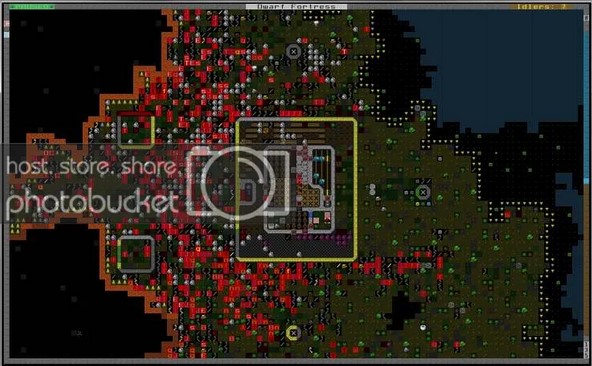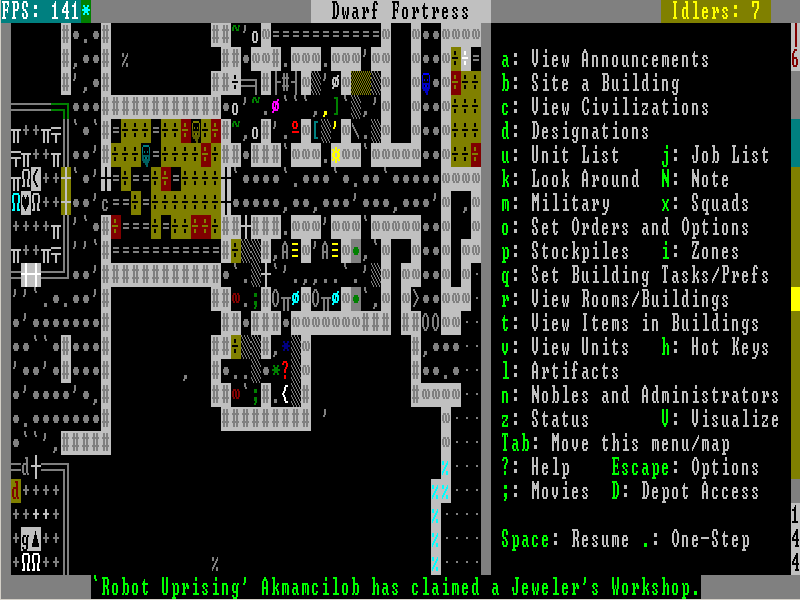
So be careful not to block up all your stones if your economy relies on stonecrafting. The disadvantage is that blocks cannot be used for anything other than constructions and buildings: furniture and crafts require raw stones. In addition, buildings and constructions made from blocks are somewhat more valuable than those made from raw stone, and are built faster. I usually build a special mason's shop for this near the quarry, with its work queue filled by "make blocks" orders on repeat so that my manager doesn't give it orders for anything important, and I set it to "beginners only" so that my master masons don't waste their time.īlocks can be stacked to 10 in bins in a stockpile, cutting down the space you need by 60% (assuming you have plenty of bins). This is also a good way to train up beginning masons, since their skill affects only the speed of the job (and it's a pretty fast job anyway). Each boulder creates four blocks, each of which can be used in place of a raw stone when building things (so you get 4x as many things out of it as well). This is also useful for anything you want to trade anyway.Īnother way, if you're mostly planning to use this stone for constructions, is to order it carved into blocks at a mason's workshop. The depot can hold an infinite number of items, and those items will not be removed if there is nowhere else to place them. Not only does this train siege operators, but it clears the stone that your legendary miners leave.Īnother way to quantum stockpile is to not have appropriate stockpiles to move items back you moved to the trading depot. The stone will pile up in the channel, putting it out of sight and out of mind. By firing the catapult at the wall, the stone falls into the trench. Some consider it to be an exploit.įrom the wiki there are also these two tricks:Ī similar effect may be achieved by building a wall two tiles in front of a catapult and digging a channel between the wall and catapult. This trick is called a quantum stockpile. (Use the same commands but D to mass undump items, or c to claim/unforbid). You can designate a mass area as stuff to be dumped, use d, go to item properties b and select d any squares you now designate containing items, will mark those items to be dumped. For ease of unforbidding it is best to just use one square as a garbage dump zone.Īny item that is marked as garbage/to be dumped is hauled by a hauler to a garbage zone, and then marked as forbidden. If you want to stone back in rotation, just unforbid the stone. Your haulers will now dump any stone designated as garbage there. Taking all these factors into account, there are some armor types in Dwarf Fortress that stand out as good options.Designate a garbage dump zone using the i command and using d to designate the zone as a garbage dump. Players must also take into account that plate armor is heavier, which will impact combat as well. A steel plate will do much better against bludgeoning force weapons, but chain mail is better against cutting weapons or slashing damage. The effectiveness of the armor worn will also depend on the weapon or type of damage it is defending against. Of course, nothing is simple in this indie classic.

In simple terms, there are three classes of armor: clothing, leather, and metal. Much like in real life, wearing a shirt could protect against minor grazes, and so in Dwarf Fortress, clothing can be considered armor even though it is almost useless. For example, a dwarf can mix and match by wearing a leather helmet and a metal chest plate.

There are different materials that can be made into armor, and they can be made in individual pieces. As Dwarf Fortress is now available on Steam, the complex game has found a new market of players that have much to learn.


 0 kommentar(er)
0 kommentar(er)
